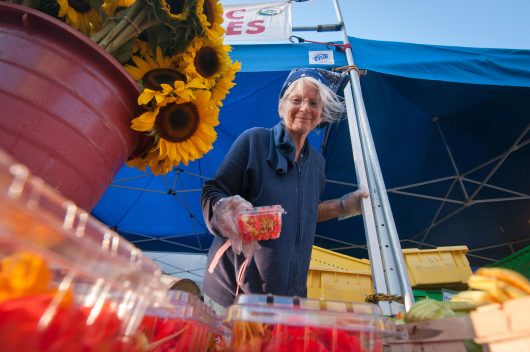10 Facts About the IFAD

The IFADs work is a critical component for addressing food security across the globe and helping to reduce poverty.
The International Fund for Agricultural Development (IFAD) is a specialized agency under the umbrella of the United Nations. It works to educate families in developing regions and to provide them with access to resources for sustainable agricultural practices. Here are 10 facts about the IFAD.
10 Facts About the IFAD
- The fund started in 1977 as a specialized agency of the United Nations. The framework came out of the 1974 World Food Conference in Rome.
- Continuing to pursue the vision of five presidents before him, Gilbert F. Houngbo has been leading the fund since April 2017. A Togo native, Houngbo has dedicated 30 years to working with the world’s poor in rural areas. Houngbo led field operations in over 100 different countries as the deputy director-general of the International Labour Organization. He served as prime minister in the Republic of Togo from 2008 to 2012.
- The IFAD currently has staff members in over 40 countries and subregional offices. There are more than 600 people on staff.
- The agency works to provide developing nations with low-interest loans and grants used to fund agricultural projects in developing rural areas. It focuses on passing on integral skills and essential access to natural resources to individuals and families in developing nations.
- The agency falls under the jurisdiction of a governing council and an executive board. A president and vice-president manage it, including an array of departments such as financial operations and corporate services.
- Rome, Italy houses the IFAD headquarters.
- The fund is one of three multilateral institutions working to improve agricultural practices in Africa. It is also the only institution that has an exclusive focus on smallholder development — meaning a focus on farmers who cultivate small plots of land and rely on family for labor. IFADs outreach stretches across five continents, where impoverished rural areas benefit from a focus on smallholder development.
- Ongoing projects are located in areas of Asia and the Pacific, East and Southern Africa, Latin America and the Caribbean, Near East, North Africa, Europe, Central Asia and West and Central Africa. These areas receive financial support and agricultural technologies.
- Thus far, IFAD has distributed over $12.5 billion in grants and low-interest loans, leading to 860 different projects, and impacting more than 370 million people. Those benefiting from the fund’s efforts have been able to achieve better food security for their families.
- IFAD is working to mobilize more funds and resources to be invested in developing rural areas and to improve the quality of its programs through partnerships with other nations. The fund looks for the best ways to address each country’s evolving needs with Agenda 2030, a global initiative working to eradicate poverty and hunger. Agenda 2030 will work to further expand IFADs outreach, starting in 2016 and continuing through 2025, and will focus on sustainable agricultural models.
– Leah Potter
Photo: Flickr
